Nablus is my favorite Palestinian town. Yet when I set my third novel The Samaritan’s Secret in Nablus, I discovered many Westerners had never heard of it. Here are some of the locations I used for the book.
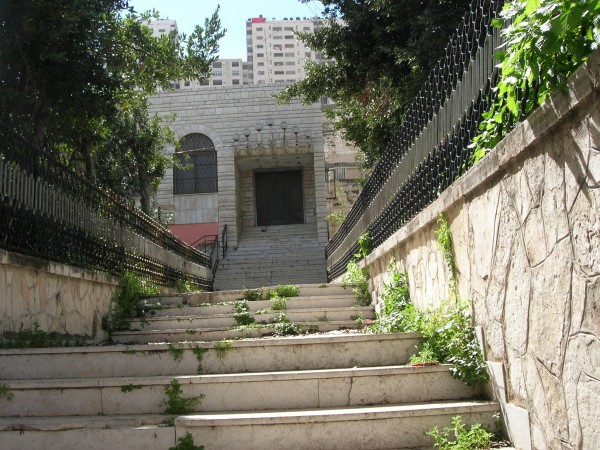
In 1997, I went to Nablus to investigate the theft of a historic Torah scroll from this Samaritan synagogue. I knew about the parable of The Good Samaritan, but I had no idea the people still existed. The Samaritan’s Secret begins with Omar Yussef visiting this synagogue because of the theft of a scroll.
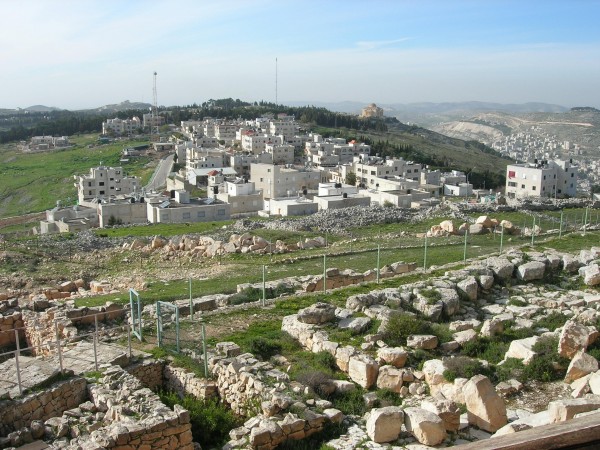
The Samaritans moved out of in Nablus in the 1980s to escape the violence of the first intifada. They built this village on the ridge high above Nablus. In the foreground are the stones of their ancient Temple. There’s a profound quiet on the mountaintop. That, I thought, makes it a very good place for a murder.
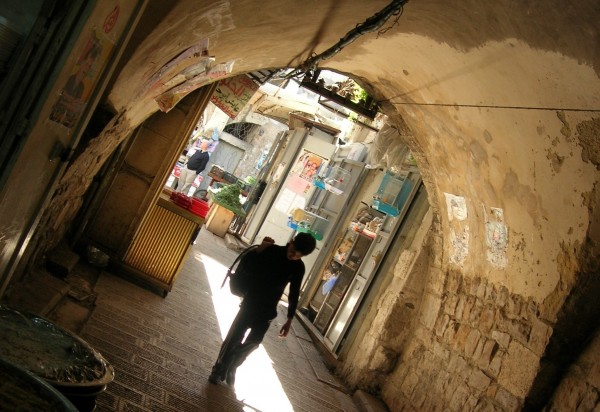
The first time I visited Nablus in 1996, I quickly completed my reporting for the news article that brought me there and took time to wander the casbah. Most of The Samaritan’s Secret takes place in these mysterious, vaulted pathways.
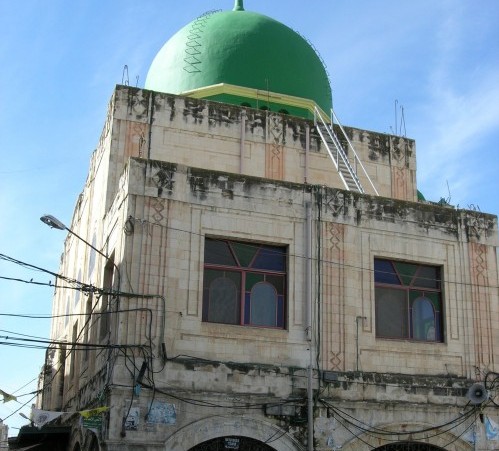
I used this Hamas mosque in the casbah as the basis for the one featured in The Samaritan’s Secret. I first met its imam when I went to report on a big wedding Hamas put on. Nablus men found they often couldn’t pay the dowry required to marry. So Hamas paid for dozens of brides and grooms to wed – to show that Hamas was looking out for ordinary people in a way that the PLO wasn’t.
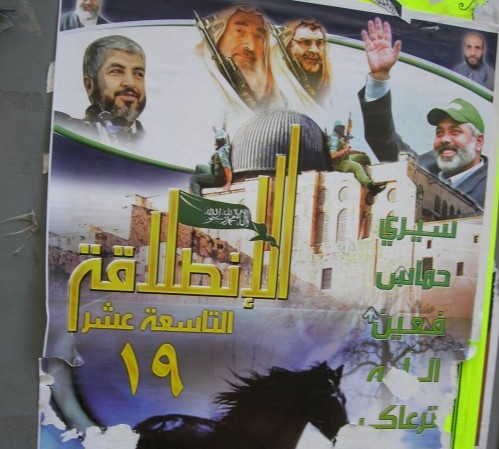
A Hamas poster on a mosque in the casbah for a celebration of the group’s anniversary. The divisions between the Palestinian factions always fascinated me. On my first visit to Nablus, I reported on the torture death of a young activist at the hands of Palestinian police in the city’s Juneid Prison. It was a different focus from most reporters, I guess.
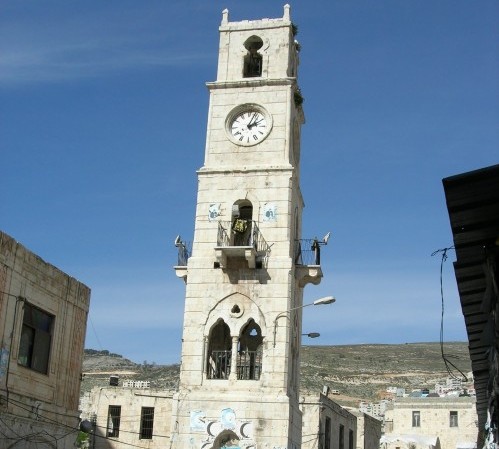
The plaza around the clocktower features in The Samaritan’s Secret as the location of a Hamas rally. On a research trip for the book, I met a gunman wandering past it in the middle of the afternoon with his M-16 across his chest. Israeli soldiers had invaded the casbah only a few days before to arrest him. He evaded them and felt safe enough among the afternoon shoppers, when I saw him. Two days later he was killed by Israeli soldiers near here.
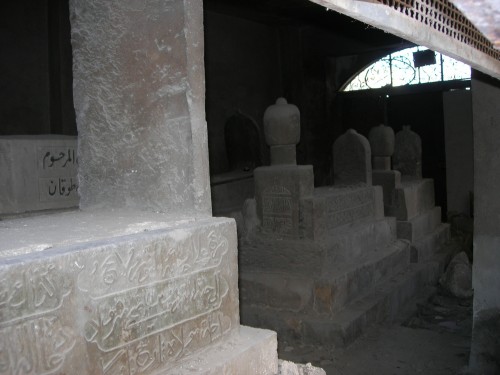
These tombs from the Ottoman period have been enclosed by a building as the casbah expanded over them. Buried here are members of the influential Touqan clan. The bars surrounding them were blown away by Israeli troops searching for an arms cache. It’s the kind of thing you find all over the casbah – traces of a time when power was in other hands, alongside signs of the struggles that go on today. In The Samaritan’s Secret, Omar hides here.
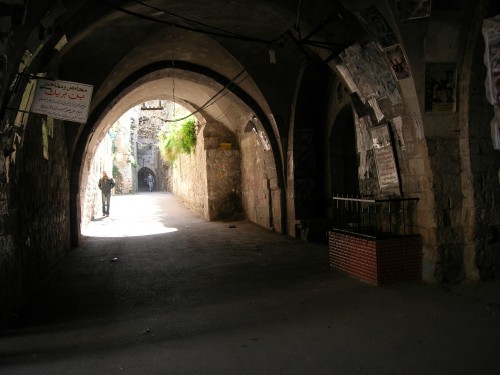
This center of the casbah, the Yasmina neighborhood. I’ve often stood in these shadows watching people pass. There’s a spice shop in the dark door on the right and the smell of cardamom from the grinders is delicious. One of my main characters lives in Yasmina and has a nasty exchange on this spot.
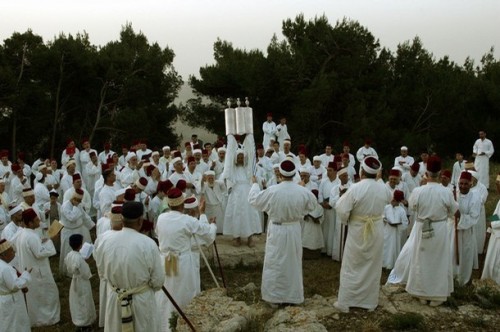
Samaritans celebrate Passover on Mount Jerizim. They maintain ancient Jews once observed Passover this way. Their High Priest says their Torah and that of the Jews are the same, “except for 7,000 errors in the Jewish one.”
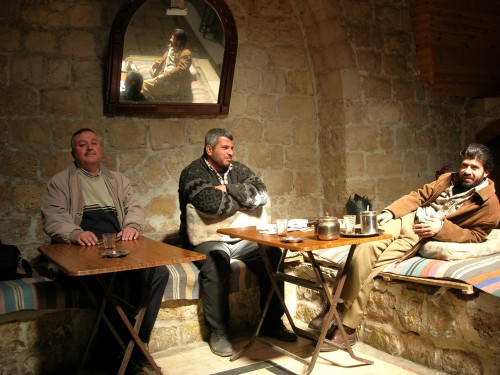
There are two old Turkish baths in the casbah. This is the biggest and it’s also a social center where men come (except Tuesday, which is ladies’ day) to smoke a water pipe. I’m no clean freak, but Omar Yussef’s distaste for the large amount of mold growing thickly all over the showers is based on my reaction.
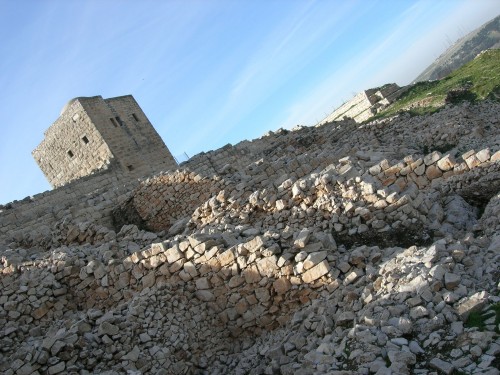
On the summit of Jerizim beside the ruins of the Samaritan temple stands a Byzantine fortress. Many times I’ve looked out over the hills toward the Jordan Valley. It’s a peaceful, beautiful place and hard to imagine the violence that surrounds it. I set part of the concluding action of my novel in this fortress.
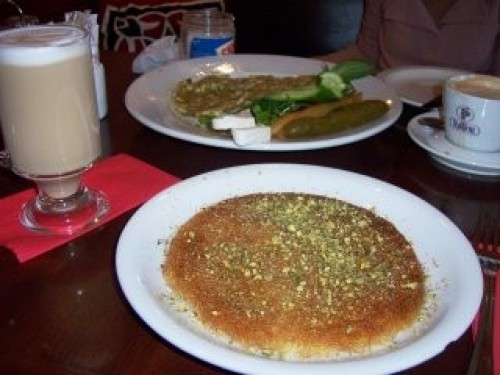
Nablus is famous among Arabs for its qanafi, hot goat’s cheese covered in syrup. The less serious element of The Samaritan’s Secret is the question of whether Omar Yussef — who doesn’t like sweets — will eat any during his visit.
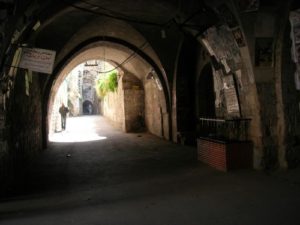
 My Caravaggio novel: St. Catherine made me write it
My Caravaggio novel: St. Catherine made me write it